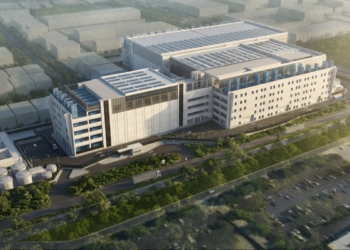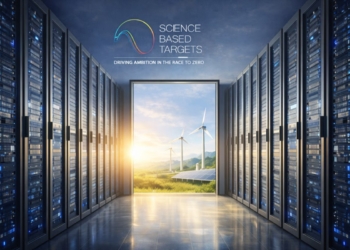Alfa Laval spearheading drive for more sustainable data centres
Author: Isha Jain

Alfa Laval has launched its latest, most sustainable T21 gasketed plate heat exchanger (GPHE), to help the data centre sector save tonnes of CO2, through highly efficient cooling and minimised energy consumption, following the reports that UK greenhouse gas emissions have risen year-on-year.
According to a June 2023 report from the Office for National Statistics, UK greenhouse gas emissions rose by 3% to just over 502 million tonnes of CO2 equivalent between 2020 and 2021. This announcement was followed by findings from the International Energy Association (IEA), that energy use from data centres has grown by 20 – 40% annually from 2010. With the IEA expecting further, more moderate sector expansion, more efficient facilities will be needed to keep its carbon footprints from growing.
These figures and findings, alongside tightening sustainability legislation, underline why the data centre industry must maintain its impressive momentum around decarbonisation, and the impact reviewing process equipment at existing and new facilities could have on these ongoing efforts.
According to Gemma Reeves, Business Unit Manager for Heat Transfer at Alfa Laval, sector sustainability strategies should be expanded to focus on minimising energy use and realising heat recovery opportunities. Advanced, efficient plate heat exchanger technologies such as the T21 will be key to this.
“Energy efficiency can account for more than 40% of emissions reductions in the next 20 years and will be crucial to achieving net zero,” Gemma says. “Considering 50% of today’s potential for energy savings comes from industry, and 30% can be achieved from buildings, this puts pressure on power-intensive sectors to decarbonise. For data centre stakeholders, the selection of more efficient process equipment can provide an immediate way to reduce carbon footprints while optimising performance.
“For example, our new T21’s upgraded plates provide more opportunity to increase thermal efficiency, minimising the demand on mechanical cooling methods that are becoming increasingly pushed to their limits as rack densities increase. Similarly, it allows for more effective recovery of waste heat, which can be redeployed for other site processes or for use in other systems such as district heating schemes. Harnessing and reusing these otherwise wasted process by-products will be crucial to emissions reduction, so I would urge data centre stakeholders to explore solutions that will allow them to do so effectively and efficiently, including the T21.”
The new T21 includes Alfa Laval’s energy driven patented efficiency features, including CurveFlow distribution area technology to improve media flow and minimise fouling risks, alongside the company’s OmegaPort, which further enhances flow and thermal efficiency.
The T21 also incorporates the possibility to further optimise the unit efficiency with Alfa Laval’s FlexFlow plate design, which uses asymmetric channels to optimise pressure drop utilisation and make additional improvements to thermal efficiency when unequal flows are at play.
“GPHEs are often crucial to a facility’s uptime, so ensuring best possible performance and equipment specification is a must for data centres,” Gemma concludes. “Collaboration across the supply chain will be required to ensure energy consumption can be reduced and operators’ decarbonisation journeys remain on track. Specifying effective solutions such as the T21 will be crucial to this, so it is vital data centre stakeholders work in close partnership with suppliers to identify opportunities where upgraded equipment can help turn potential efficiencies into reality.”
Click here for more latest news.








